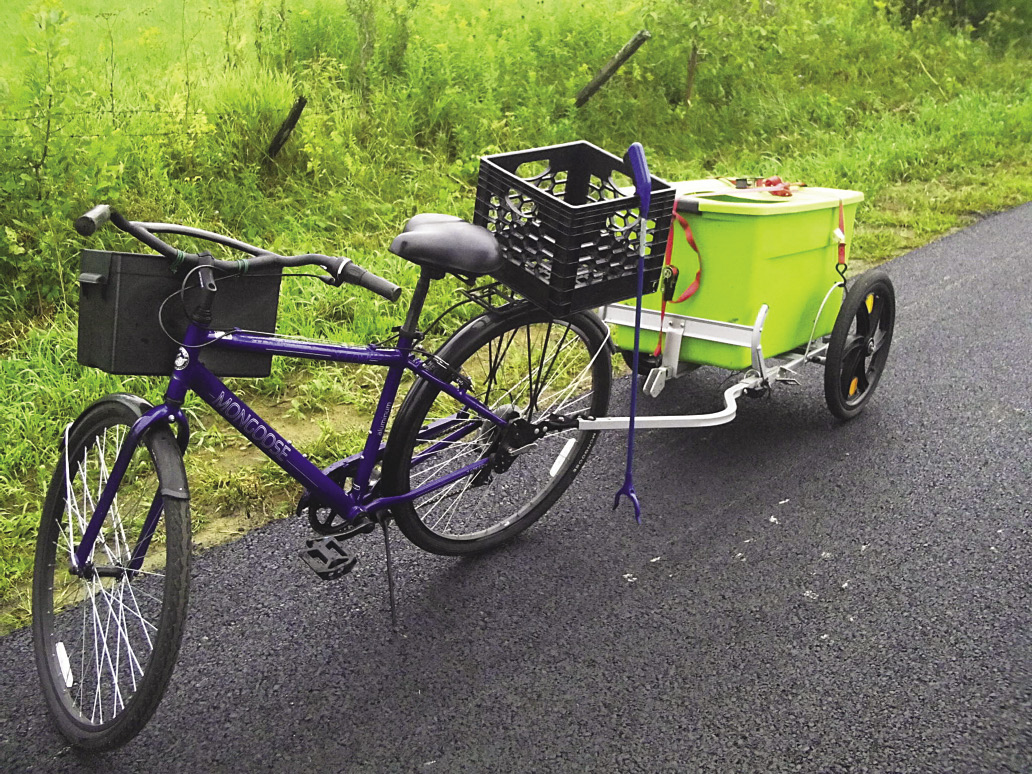By Setanta O’Ceillaigh
When times are hard it pays to ride a bike. Bikes can travel at a reasonable speed, carry a reasonable cargo, and there is very little that can break. They are light enough to carry over rough terrain, and they are very good on gas — they don’t use any. But a bike is more than a means of hauling cargo or getting from place to place; it is also a very valuable foraging tool if you know how to use it.
To forage with a bike, it should be outfitted with a basic kit for the task. A good mountain bike should have a basket in front, and two side baskets in the rear or a cargo bin on the back. A bike trailer is also very useful, but not a necessity. Any basket can be attached to the front of a bike, however my personal preference is a plastic battery box. To attach it, I bore out a few holes in the lip and use zip ties to fasten it between the handle bars. To keep rain water from collecting, I also drill out a few small holes in the bottom. For rear side baskets, I have used a heavy saddle bag basket I picked up in a yard sale and have also used square buckets that I attached to the sides. A milk crate can be added as a rear cargo bin directly over the rear wheel.
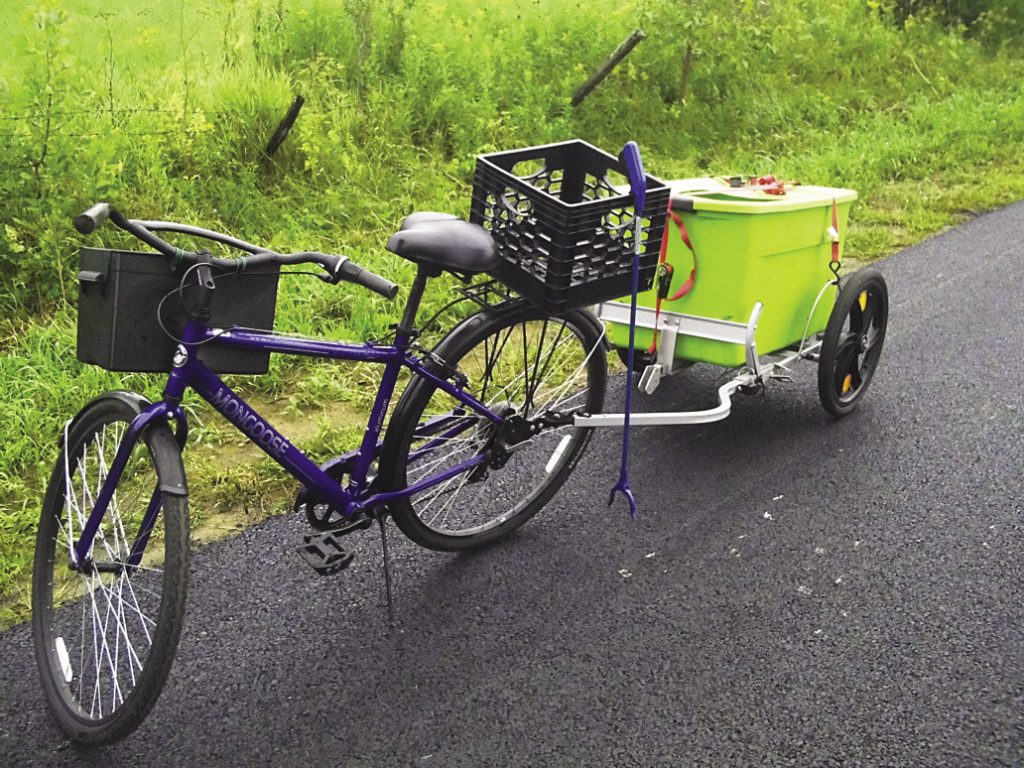
A few tools are very handy for foraging, these include cloth and plastic bags, a knife, some kind of reaching tool (such as a can grabber or an old wooden cane), some light rope and bungee cords, and either a crack barrel pellet pistol or slingshot with a small amount of ammo. The tools should be stored within easy reach; the front basket is ideal. There should also be room for a water bottle, rain jacket, and any other miscellaneous tools that need to be kept at hand.
When foraging, stick to back roads. Bigger roads can be foraged along, but I recommend not picking anything close to the roadside. This is due to gas and oil runoff and other contaminants that might come from vehicles. Scarcely-used roads should only have a few feet for a no-pick zone, while busy main roads should have up to 100 feet for a no-pick zone. Use discretion.
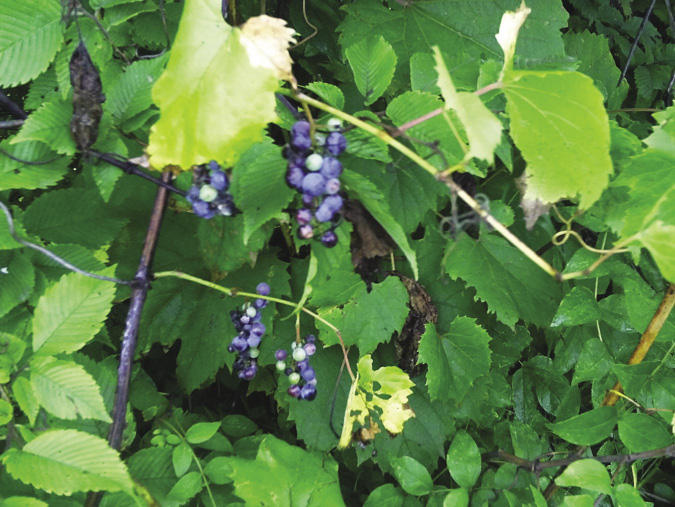
Recent logging sites might be filled with wild raspberries and blackberries. Old abandoned farms may yield wild carrots, parsnips, and other crops growing outside cultivation. Abandoned houses that are falling in might have asparagus, knotweed, Jerusalem artichokes, and rhubarb growing all over the yard. Forest edges might yield wild ginseng and ginger, hickory, walnuts, and butternuts. Many apple trees have grown near roadsides because someone threw an apple core out a car window. I have found old fences covered in wild grapes. Wetlands can be sources for cattails, duck potato, and wild rice. A gold mine of free fresh fruits and vegetables can be found as long as a bike forager knows what’s what and what is in season.
To collect things, I get off the bike and push it into the grass off the road (easier to do without a trailer attached — with a trailer it is best to use the kickstand).
If I find a dense area of wild grapes that are ripe, I twist the bunches off from the vine and pack them into a doubled up plastic bag (a grocery bag lined with another grocery bag). I don’t bother trying to separate each grape, plus the wild grape is mostly seed. I fill the bags and fill the saddle bag baskets with them. To use them, I dump them all into a large stock pot and pack them down, add about three inches of water, cover the pot, and set it on the stove. I heat the water to a boil and the steam wilts the stems and makes the grapes droop and weep. After a few minutes of boiling, the fruits are turned to a loose mush. I use a cheesecloth to filter out the mush, seeds, and stems, and set the juice aside to make wild grape jelly. Wild grape juice can be jellied following any grape recipe, but the result is a tart jelly not a sweet one. It’s really good.
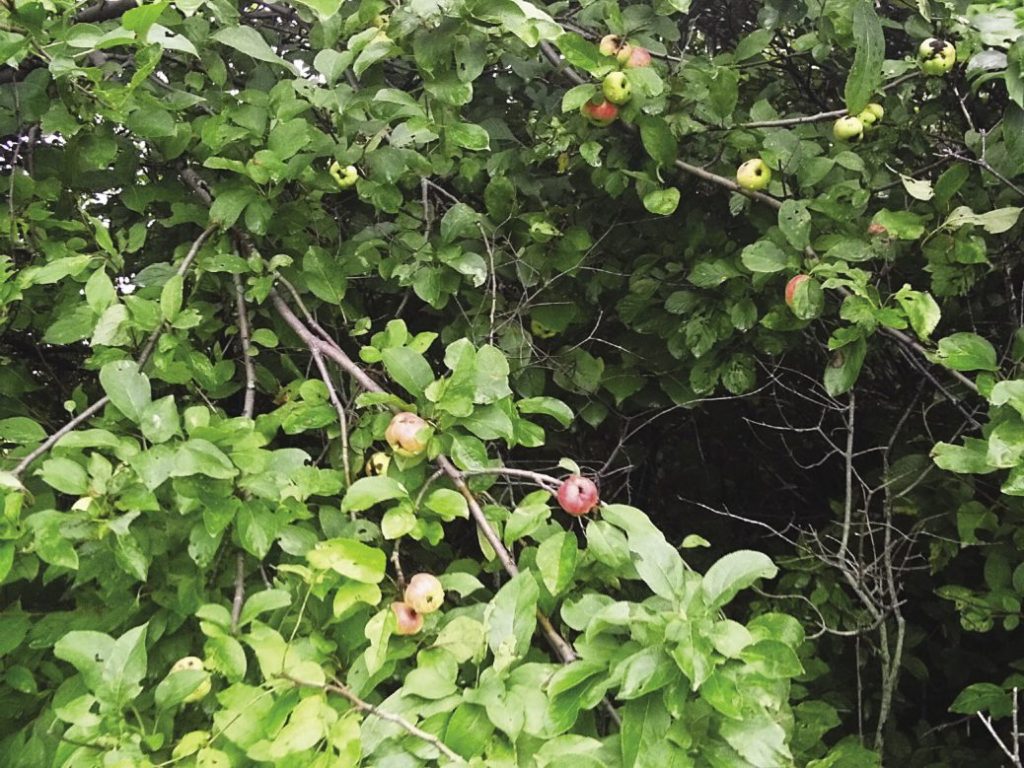
For apples, I use the reaching tool to hook branches and pull them down to where I can reach them. I pick the best ones and make a big pile that I load into bags and cart home. Roadside apples tend to be small, but make for good cider. To make it without a press, I chop up the apples and crab apples and toss them all in a big stock pot and boil the same as I do for the grapes. After quickly filtering, the result is a tart juice that can be canned as cider or used to make a strong, cider-flavored jelly.
Hickory nuts and butternuts can be picked up off the ground, bagged up, taken home, and cracked with a hammer or nut cracker (depending on species). They can be added to breads and trail mixes, and a good breakfast can be had from boiled cornmeal mush, maple syrup, and hickory nuts. Locally, hickory nuts sell for $5 a gallon, and I know several people who make good money in the fall fighting the squirrels for them.
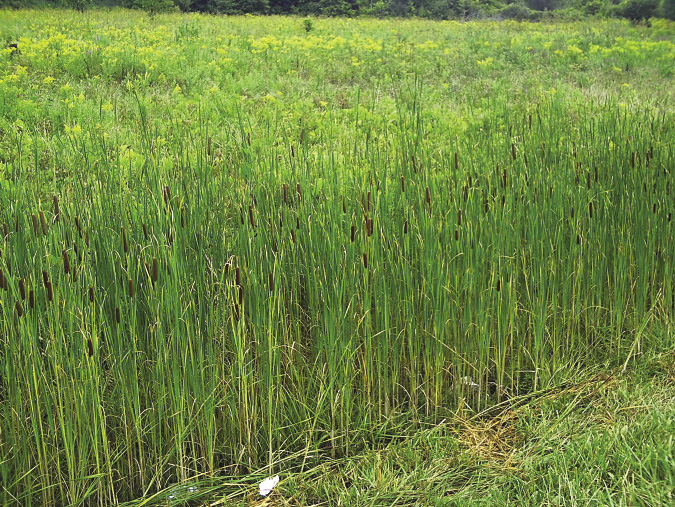
When digging up roots, I use the knife from the tool kit to make a pointed digging stick on the spot. Roots can be piled into a bag, taken home, washed, and cooked.
Raspberries, blackberries, blueberries, black raspberries, currents, and other berries can be used fresh, canned as jams, jellies, and pie fillings, or sold for $5 a pint.
I keep note when I see things like asparagus growing wild, that way I can return to the spot in the spring and transplant them to my homestead.
Bike foraging can be enhanced with guerrilla gardening. This can be done by planting onion sets or garlic or by deploying seedbombs. Seedbombs are made from a mix of seeds, fertilizer, and clay, rolled up and air dried and thrown into abandoned areas. When rain water hits the seedbomb the clay dissolves so the seed can start growing with a little fertilizer. Many roadside apple trees grew from accidental guerrilla gardening, and the same method can be used for over ripe garden produce, throwing squash or tomatoes into random places. Sometimes the seeds will germinate and grow wild, sometimes they won’t. Nature has been spreading seeds this way on its own forever. A bird eats a berry, flies away, and the seed is dropped out somewhere else with a little fertilizer. Seedbombs are just mimicking a natural process.
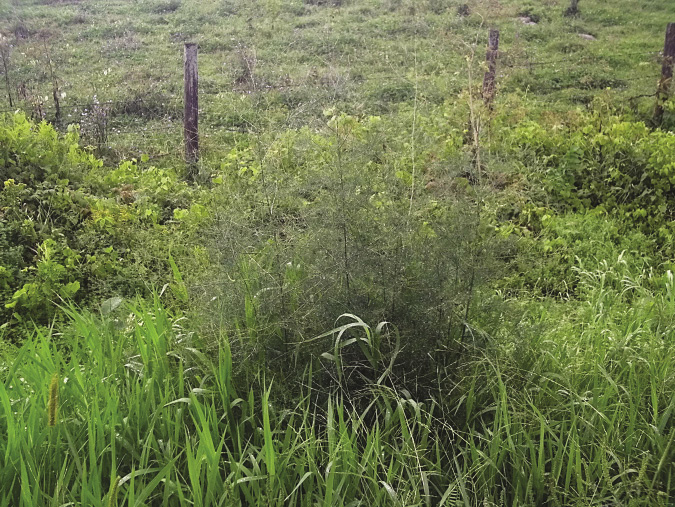
Bike foraging can also be used for opportunistic hunting. By keeping a loaded pellet pistol or slingshot in the front basket, it is possible to take rabbits, grouse, squirrel, and woodchuck when so see them as you ride by. (Just know that shooting from the road is illegal just about everywhere, so don’t do that.)
The few dangers I have experienced while foraging on my bike are the same as using a bike in any other way. The biggest danger is aggressive dogs. If a dog gets close, I get off the bike and push it, keeping on the other side of the bike so it acts as a shield. Most dogs back off when I hold up the cane; they know a human with a stick means trouble. Having the pellet gun helps even the odds in an attack. I have been bitten by a few dogs while foraging and don’t take any chances now. The only other dangers I have faced are from reckless drivers.
When foraging, I stick to the back roads, stay out of peoples yards, and only forage from land known to be public (such as state or federal land), from abandoned properties (like run-down, falling-in houses with weeds and shrubs all over the yard), or from other tracts that are obviously not being used for anything. By regularly scouting, it is possible to forage large amounts of free produce. With the right mindset and some simple tools it is easy not only to stay fed, but also make a small income doing so — both things always worth considering when times are hard.

